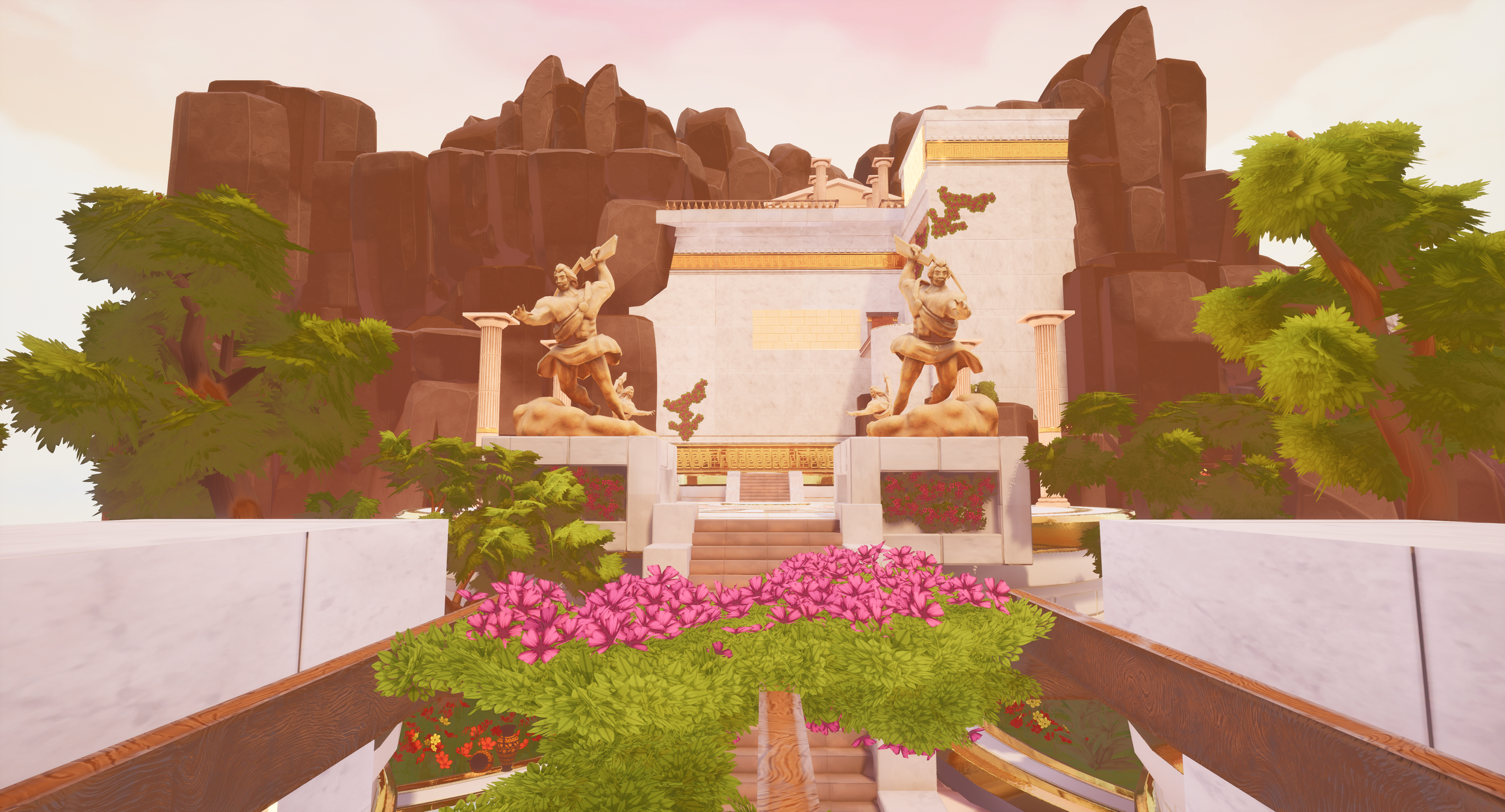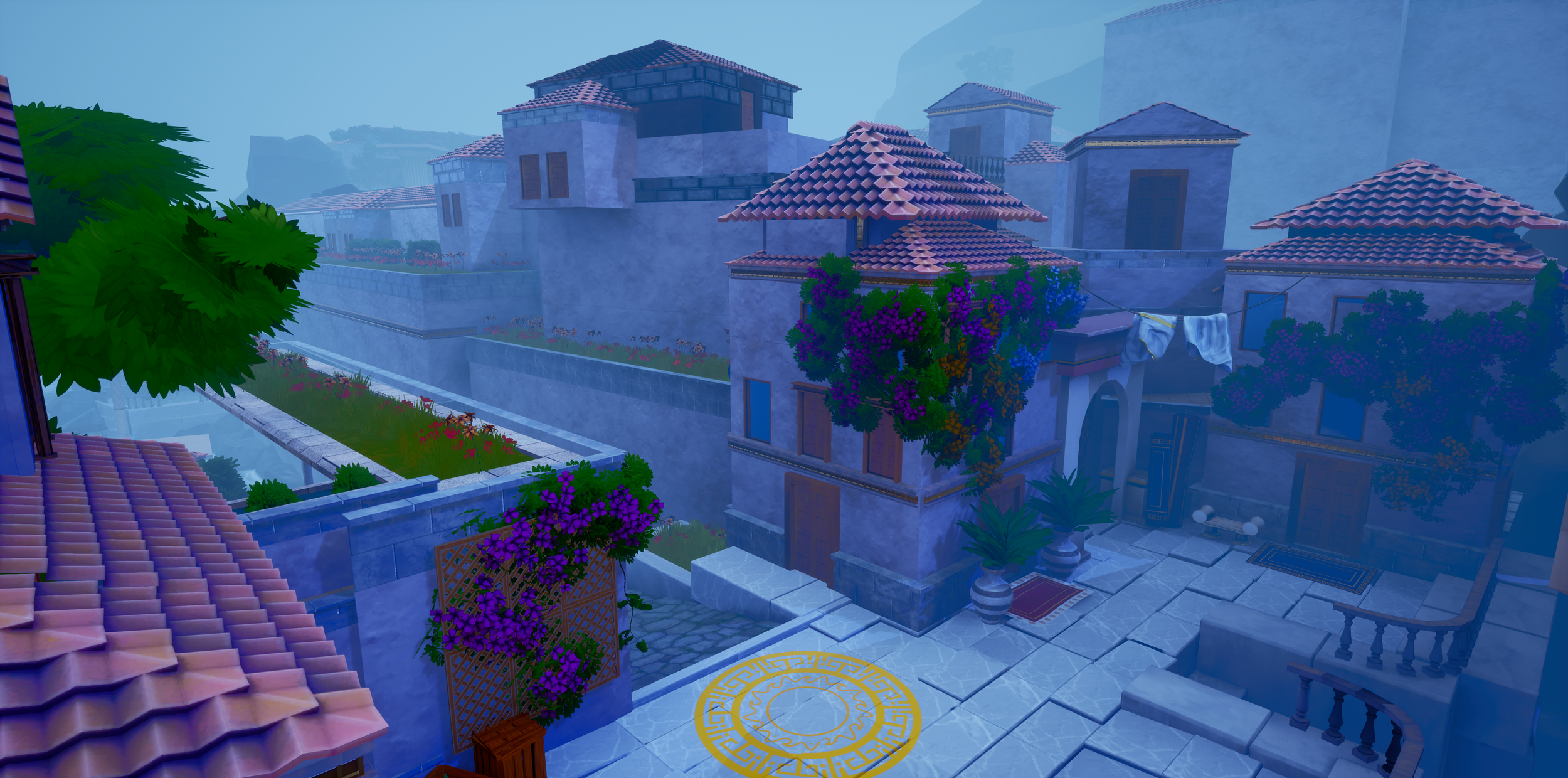
Studio Impasse | Level Designer & Artist
Tools Used : Unreal Engine 4, Blueprints, Maya, Sketchup Layout Design
Team Size: 15 Developers
Genre: Third Person Speedrunner
Release: August 2022 Steam Link
Description: Hermea is a 3D, third-person speedrunner and is being developed by a 15-member interdisciplinary team in Unreal Engine 4 for a period of 7 months. Play as Hermea, an intern at Hermes' Mail Delivery Service, and quickly deliver mail to the gods and goddesses of Olympus... though they may not want what she's delivering.
Contributions:
Level designer for 5 levels in 3 unique environments from concept to completion.
Coordinated in development of mechanics, gameplay, scope, and narrative direction of the game
Created fleshed-out environments and environment art utilizing assets provided by our art team
Drafted Design Documents to indicate challenges and gameplay mechanics introduced in each level and environment
Utilized Blueprints scripting to create obstacles that accommodate a variety of playstyles for players to complete the levels

Featured Levels

Pre-Production
After bouncing around a few game concepts, our team split off into 4 separate small divisions to do a game jam to nail down a concept, we settled on creating the 3D Speedrunner game known as Hermea. We initially planned to have nine levels within Olympus, Acropolis, and Underworld having three each. We wanted each environment to unique in challenges and layout so each stage brought unique element to the table.
Documentation: Before I entered the engine, I composed a design document tailored to each environment detailing the art style, gameplay challenges, asset wish list, metrics for player mechanics, and a map layout to detail the obstacles and length. When we brought on the additional level designers, I still provided the documentation criteria, but they composed the level layouts for their own levels. I would approve them and would provide feedback to help them adjust their work to align with the overall project.

Whitebox
Once level drafting, documentation, and metrics were established, we jumped into creating various designs of block outs. This phase of the level was a combined effort of me making level layouts using a block out kit and tech designers making blueprint components that allow for environmental manipulation. I would take these blueprints, tweak them for the situations they were utilized in, and implement them into the levels. The first drafts offered more variability in routes that players could take and focused more on building environmental layouts. After a few weeks of development of these levels, we decided to scrap alternate routes, as it would take too long to develop and be in scope for the number of levels we wanted for the game. The entire first block outs of Acropolis including landscape design, obstacles, and environmental were drafted by me. Over time, the environments were adapted in response to feedback such as exploitable areas accessed through abilities, impeded gameplay, and difficulty being too high.
Early Acropolis Whitebox Run-through

Art Implementation & Set Dressing
After the whitebox was completed, playtested, and adapted to our final playstyle, it was time to move onto implementing assets and dressing. We used two asset packs to lay a foundation for the architecture of Greek environment, and utilized amazing stylized art assets composed by our art team to develop the other levels.
I began by set dressing the architectural parts of the level first (walls, floors, and doors) to ensure the look was to scale to the block out. At this stage in the project, we were still using block out asset packs. I started changing the more general parts of the level design and toward more detailed set dressing as I progressed through the process. As more unique art was finished I performed more frequent passes of the space to ensure that our artist’s pieces were being shown off and utilized to their full extent. As with block out process, I noticed my skills at set dressing improve dramatically as we developed more into the level.

Lessons Learned
Hermea is the first real game I have worked on, and the process presented challenges and opportunities that accompany the game development process. These experiences have not only helped me improve my level design skills, but also helped me develop my abilities in management, lighting, optimization, and quality assurance. The experience was as enjoyable as it was challenging, and I am more prepared going into my next production.
Being on a Team: Taking on the role as lead level designer, I learned quickly that communication can be as challenging as it is important. There are lots of moving parts of this project and I found I had to collaborate with the programming team and the art team at various stages of the level design pipeline to obtain a synergy and clear production schedules
Adapting: Throughout the project I had to get used to shifting priorities often. Sometimes in the project the level would have to go through extensive changes whether it was from feedbacks, or a change in our mechanics. Being the lead level designer also means setting up meeting with the other leads and level designers to make sure our gameplay was consistent.
Optimization: The Blockout stage was a very crucial to this game. Each level I drafted in an LDD, I got more familiar with our gameplay style and the process sped up exponentially. To my eventual regret, I ended up deleting a majority of the white box placeholders once I started environmental art to optimize our project size and workflow. After this project, I learned to ensure that all stages of production will be kept within the project files for my reference of methodology and dev





























